Politburo member and Prime Minister Pham Minh Chinh attended the opening ceremony of the 2024-2025 school year at Nguyen Dinh Chieu Secondary School in Hanoi_Photo: VNA
New context and international experience in ensuring social security and solving social problems
Since the COVID-19 pandemic, the world and domestic situation has changed a lot, creating new opportunities and challenges for socio -economic development in general and ensuring social security and solving social problems in particular.
Firstly , the complicated and unpredictable changes in the world's political and economic situation, many conflicts in the world, policy adjustments of major countries... have negative impacts on Vietnam's economic growth, as Vietnam is an economy with a large degree of openness, thereby causing risks to employment, workers' income, as well as resources for ensuring social security and solving social problems.
Second , the emergence of digital transformation trends, the application of artificial intelligence and the development of science and technology have both created new opportunities to ensure social security and solve social problems, and caused new challenges in terms of employment, income, digital inequality, and the risk of economic backwardness, leading to social security issues.
Third , the process of restructuring the political system according to Resolution No. 18-NQ/TW, dated October 25, 2017, of the Central Executive Committee, on "Some issues on continuing to innovate and reorganize the political system to be streamlined, effective and efficient" and the country's development orientation in the new era creates breakthroughs and new impetus to solve social security and social issues, while causing short-term challenges in ensuring social security and solving social issues. From the perspective of employment and the labor market, restructuring the apparatus associated with streamlining the payroll will shift a part of the labor force from the public sector to the private sector, on the one hand, providing more labor resources for the market, on the other hand, creating pressure on job creation for workers, career transition for workers from the public sector to the private sector as well as causing the risk of brain drain in the public sector.
Fourth , climate change is having a strong impact on Vietnam, increasing social security risks and related social issues. At the same time, global trends as well as the Party and State's policies on green transformation, green growth, net emission reduction and sustainable development create challenges and opportunities for solving social issues. Climate change poses risks to socio-economic development, especially to the livelihoods of the poor and vulnerable. At the same time, the green transformation process and response to climate change create new job opportunities and development opportunities. A better environment will improve health and reduce pressure on health care.
Fifth , the rapid aging of the population in Vietnam poses challenges to social security and related social issues. Since 2010, the natural birth rate has decreased from 10.27‰ to 9.1‰ in 2022 due to the crude birth rate decreasing from 17.07‰ to 15.2‰ and the crude death rate decreasing from 6.8‰ to 6.1‰. This poses challenges to the labor force, economic growth, and increases the need for social security for the elderly.
Sixth , the rapid urbanization, industrialization, modernization and economic restructuring create challenges for social security and social issues. Urbanization, industrialization, modernization and economic restructuring have transformed the structure of labor, employment and occupation. As a result, income, living conditions, the ability to ensure social security and solve social problems have been improved, and workers have the opportunity to enjoy better material and spiritual conditions.
The COVID-19 pandemic has had a negative impact on social security, giving rise to and exacerbating many social problems in countries around the world. Therefore, countries around the world have implemented many measures to both respond to the pandemic, support those negatively affected by the pandemic, especially the vulnerable, and research and innovate the social security system and social policies after the pandemic to suit the new context, better meet social security needs and solve social problems. Among them, it can be seen that:
Firstly , adjusting policies to support labor and employment during and after the pandemic, while promoting the process of labor and occupational restructuring, adapting to demographic conditions, socio-economic conditions and new trends. In particular, focusing on the following main orientations: 1- Creating new jobs through policies to encourage and promote businesses to develop in the direction of using digital technology, green technology and sustainable development; 2- Implementing policies to support training and career transition for workers to adapt to changes and new demands of the labor market in the process of digital transformation and green transformation; 3- Building a good social security policy system to create a safety net for workers in the process of career transition; 4- Focusing investment resources on developing education and training, building training programs to adapt to new requirements of the green transformation process and applying science and technology from the Fourth Industrial Revolution.
Second , the COVID-19 pandemic has exposed the issue of coverage and access to the social insurance system as well as the sustainability of the system. Therefore, during and after the pandemic, many countries have adjusted their social insurance systems towards expanding coverage, especially for pensions, and increasing the level of benefits for social insurance participants. Encourage workers to continue working after retirement. Social insurance policies focus on increasing access and coverage of social insurance for people; implementing measures to build a sustainable pension fund in the context of population aging. Innovation in insurance payment methods, insurance payment subjects and pension fund management methods are measures used by many countries to expand the coverage of social insurance. Pension reform policies applied by countries around the world can be divided into two large groups: Reforms to ensure the long-term sustainability and adequacy of the pension system; policies to expand access to pension benefits for certain groups, through new possibilities for purchaseable contributions or new pension initiatives.
Third , regarding social assistance, countries have had flexible policies, expanding the scope of assistance, focusing on cash assistance for people during and after the pandemic to overcome the negative impacts of the pandemic on people's lives, especially vulnerable groups. The pandemic has shown the important need for the Asia-Pacific region to continue building a more modern, comprehensive social protection system that is capable of responding to shocks and adapting to new fluctuations in the labor market.
Fourth , regarding access to basic social services, many countries are interested in improving access to health services, limiting inequality in access to social services such as investing in developing a remote health care system, for example, the governments of Saudi Arabia, the Philippines, Indonesia, Iran... invest in applying information technology to develop online drug ordering services, electronic prescriptions, creating electronic health records, remote consultation and examination and treatment... to increase opportunities to access and use quality health services.
Current status of social security and social problem solving in Vietnam
About achievements
Firstly, Vietnam has solved the problem of employment and developed the labor market well. Thanks to that, the unemployment rate in Vietnam has been maintained at a low and relatively stable level. Even when the COVID-19 pandemic occurred, the unemployment rate increased, but it was still low compared to the general level in the world. Thanks to the achievements of economic development and attracting investment from businesses, the demand for labor has increased, ensuring jobs with increasing income for workers.
Second, social insurance coverage continues to be expanded, while social insurance laws are adjusted, supplemented, and improved to enhance attractiveness, flexibility, and sustainability, most recently with the promulgation of the Social Insurance Law in 2024, meeting new requirements for national development. The subjects participating in compulsory social insurance are expanded.
Third, social assistance has developed in terms of regime, management mechanism and response capacity. Regular assistance has been expanded in scale and beneficiaries. Emergency assistance has been promoted and managed more effectively. In particular, emergency assistance has clearly demonstrated its role in responding to the COVID-19 pandemic, natural disasters, storms and floods.
Fourth , social services have developed remarkably, generally ensuring better access and service quality. Education has been given attention in terms of scale, gradually innovated towards international integration, and enhanced the autonomy of public education units. Health care has been invested in expanding medical examination and treatment facilities, improving quality, and modernizing facilities and equipment. Social housing policies and the elimination of dilapidated housing have been given attention by the State and local authorities, and clean water has been improved. Environmental sanitation has become a key issue, receiving attention and direction from the State and local authorities.
Fifth, poverty reduction and social inequality reduction are bright spots in solving social security and social issues in our country. The poverty rate has decreased rapidly, social inequality has been controlled. Some localities no longer have poor households.
About the limitations
Firstly , the labor market and employment have revealed many shortcomings and are unsustainable, and have not yet become a solid foundation for solving social security and other social issues. Although the unemployment rate remains low, underemployment, precarious employment, and low-income jobs are still quite common. The proportion of people working in the informal sector is still high, leading to income risks and the risk of being poorly protected by labor contracts and social insurance.
Second , social insurance coverage is still low and the rate of coverage expansion is slow. Although the coverage rate has increased, without a breakthrough solution, it will be difficult to achieve the goal of increasing social insurance coverage.
Third , social assistance still shows many limitations, especially with emergency social assistance when there is a sudden social security shock.
Fourth, social services have improved a lot, but access to services, especially service quality, still has many problems, even in urban areas, economic centers, and large industrial centers.
Fifth , poverty reduction has achieved many impressive results, but the rate of poor people in remote areas and ethnic minority areas is still high, and the rate of falling back into poverty is still high.
About the cause
Objective reasons:
Firstly, the world's political and economic situation has had many complex and unpredictable fluctuations, especially since the outbreak of the COVID-19 pandemic, which has negatively affected our country's socio-economy, thereby deepening a number of social issues and posing a number of new challenges.
Second , despite socio-economic achievements, Vietnam is still a middle-income economy, with a low level of socio-economic development, unsustainable development, and limited investment resources for social security and social problem solving.
Third , social security and social issues have a very broad scope, involving many sectors, fields, many subjects, many different policies and laws, and are managed and implemented by many agencies, ministries, and levels. Therefore, the organization is prone to the risk of being scattered, dispersed, uncoordinated and difficult to evaluate effectiveness.
Fourth , digital transformation, green transformation, changes in awareness, lifestyle, work and consumption are affecting the socio-economy, thereby affecting social security and solving social problems.
Besides objective causes, limitations in social security and social issues are also due to many subjective causes, shown in the following points:
Firstly , slow institutionalization and incomplete institutionalization of the Party's policies and guidelines on socio-economic development, social security policies and social problem solving.
Second , implementation is still a weak link, reducing the effectiveness of policies. Many policies and guidelines are humane and have good purposes, but implementation has not been as expected.
Third , the social security system and social policies have not been designed to ensure systematic, interconnected, interconnected, diverse, multi-layered and lack flexibility to respond to and solve social security and social issues in the context of rapid changes in the world and the country, with many social and security shocks. The state management apparatus for social security and social issues is currently in many agencies and ministries, so planning and coordinating synchronous and consistent policies is difficult.
Fourth, the awareness of a number of leaders, managers, civil servants and public employees about ensuring social security and solving social problems is still inadequate. They do not realize that solving social problems is not only to support vulnerable groups or humanitarian issues, but also to unlock and develop human resources, which is the goal and driving force for socio-economic development.
Fifth, digital transformation in the field of ensuring social security and solving social problems is still slow. It has not yet built a database system for social security and social problems integrated into the national database on population. The potential of digital transformation in management, operation and provision of public services related to social security and social problems has not been effectively exploited.
Nurses take care of sick newborns at the Neonatal Center (Central Maternity Hospital)_Photo: VNA
Some issues raised
First, research to increase flexibility, responsiveness and adaptability, and quickly find effective ways to respond to sudden social security shocks.
The current social security system is mainly designed to serve regular social security needs, not designed to respond well to shocks, lacking mechanisms to mobilize, use and distribute social security resources effectively, especially in emergency social assistance. The social security system is not synchronous when the system's structure still lacks connectivity, creating a multi-layered, diverse social security net with a large coverage area.
A large number of workers, especially those in the informal sector, are outside the social security net, as they do not participate in social insurance, do not have or have difficulty accessing social assistance, and do not have pensions or retirement benefits. Thus, the social security system only ensures the high-income group working in the formal sector and the low-income group (the poor, near-poor, people with disabilities, etc.).
Second, consider forming a breakthrough policy on housing access for low-income people, focusing on developing rental housing with low rents for low-income people.
Housing for low-income people is an emerging issue in urban and industrial areas of Vietnam. Due to the rapid increase in real estate prices, the ability to access housing for low-income workers in urban areas is increasingly difficult. To date, the development of social housing for low-income people has not been as successful as expected. The XIII Congress Document and a number of Party documents have raised the issue of developing social housing. However, the policy of creating a breakthrough in housing for low-income people has not been clearly stated, and the policy of developing rental housing for low-income people has not been mentioned.
With the current approach, even if a social housing system is built, the price of social housing is still beyond the ability of low-income people. Therefore, it is necessary to raise the issue of making significant progress in housing access for low-income people, focusing on developing housing for low-income people to rent at appropriate prices. In fact, the majority of low-income people in industrial zones and urban areas are still renting houses.
Third, research and develop the Law on Social Assistance.
Social assistance is one of the important pillars to ensure social security. In recent times, the implementation of social assistance, especially emergency social assistance during the COVID-19 pandemic, has revealed many limitations. The content of social assistance is still scattered and lacking in synchronization, especially emergency assistance. Assistance activities also lack funds, mainly relying on the state budget according to resolutions of the National Assembly, the Government and social contributions. Due to legal regulations, the system of social assistance organization is scattered across many agencies, leading to inconsistency in implementation. Currently, there is no separate law for social assistance, and related content is only stipulated in a number of articles of many other laws, such as the Law on People with Disabilities, the Law on the Elderly, the Law on Children, the Law on Gender Equality, the Law on Vietnamese Workers Working Abroad under Contracts, etc., in Government decrees, leading to difficulties in effective implementation.
Therefore, the urgent issue now is the need for a unified legal document on social assistance to ensure high legality, consistency in direction, administration, resource mobilization and organization of social assistance activities.
Fourth, research and develop mechanisms, regulations and plans to ensure emergency social security when natural disasters and epidemics occur.
The recent COVID-19 pandemic and Typhoon Yagi have shown that many response and social security support activities have been carried out, but the implementation process has raised a number of issues that need further research and improvement, including the effective application of regulations to protect people's social security rights.
Fifth, research a model for workers to choose the form of social insurance contribution and benefit.
Each form of social insurance contribution and benefit has certain advantages. The transition to a defined contribution regime with individual social insurance accounts aims to help employees proactively grasp and control their social insurance benefits, while reducing the risk of having to support the Social Insurance Fund from the state budget, creating motivation for employees to work even when they are old.
On the other hand, one of the reasons why some workers have not actively participated in social insurance is because they are concerned about the risk of changing the social insurance benefit regime when retiring, and they cannot calculate how much social insurance they have paid and how much they will receive when they retire. Moreover, when the job is unstable and it is unclear whether they can pay enough years to receive social insurance, workers tend to avoid paying social insurance or if they have paid, they withdraw social insurance in one go. If using the form of personal accounts, the social insurance contributions of workers will be like a long-term savings, helping workers to be proactive and secure with their social insurance contributions. To limit workers from withdrawing social insurance in one go, if workers withdraw social insurance early, they can only withdraw from their personal accounts and will not receive the employer's contribution. In addition, this also creates flexibility and diversity in social insurance contributions and benefits so that participants can choose according to their needs, desires and ability to contribute.
Sixth , increase the level of premium support for voluntary social insurance participants and allow voluntary social insurance participants to enjoy full social insurance benefits like compulsory social insurance.
Currently, the rate of voluntary social insurance participants is very low, mainly those who have participated in compulsory social insurance and have to pay for an additional period of time to qualify for pension. The rate of people working in the informal sector and agriculture is very high. If we do not promote the attraction of voluntary social insurance participation, it will be very difficult to expand social insurance coverage and thus difficult to ensure social security for a large number of workers. The current voluntary social insurance regime is not effective in attracting workers to participate in voluntary social insurance. The goal of increasing the rate of voluntary social insurance participation will be difficult to achieve without policy breakthroughs to attract stronger participation.
Meanwhile, the State's support for employees to participate in social insurance has been successfully applied and implemented in a number of countries. Currently, the new support level applied since 2018 is still low, not enough to attract employees. Based on budget conditions, the State decides on the scale of support and the scope of support objects. It is possible to conduct a pilot study in some areas or some objects. This adjustment also increases the attractiveness, so the social insurance regime should be expanded to voluntary social insurance, instead of being limited to maternity, retirement and death. With the number of participants in voluntary social insurance not high, paying for the expanded social insurance regime will not put great pressure on the Social Insurance Fund.
Seventh, perfect the legal basis to promote the role of socio-political organizations, social organizations, and communities in ensuring social security and solving social problems.
Socio-political organizations, social organizations and community organizations play a very important role in ensuring social security and solving social problems. However, although the role of these organizations has been institutionalized, the coverage level is not high, not creating conditions for organizations to better promote their role in mobilizing social resources and effectively using resources to ensure social security and solve social problems. Promoting the role of socio-political organizations, social organizations and communities has the ability to mobilize a large amount of social resources for ensuring social security, contributing to supplementing resources for ensuring social security, reducing dependence on the state budget.
Eighth , quickly build a social security and social issues information system integrated with the national population data system.
To design and operate a social security model, it is necessary to build a social security information management system, such as demographic information, population, age, family size, education, employment, income, health, social insurance, poverty, hunger, ability to ensure social security and social security regimes that are being and will be enjoyed... Social security information is still scattered in management, in some places is inaccurate, not updated and difficult to access even for management agencies, scientific research, organizations participating in ensuring social security, such as socio-political organizations, social organizations, communities, businesses and people. This causes difficulties in policy planning and implementation, evaluating the effectiveness of social security policies and programs, identifying the right beneficiaries, causing duplication and overlap in policies and support, and difficulty in monitoring results... Therefore, it is necessary to have a transparent, clear, and updated information system to facilitate management and implementation of social security./.
Source: https://tapchicongsan.org.vn/web/guest/van_hoa_xa_hoi/-/2018/1115703/bao-dam-an-sinh-xa-hoi-va-giai-quyet-van-de-xa-hoi-trong-boi-canh-moi.aspx






![[Photo] Prime Minister Pham Minh Chinh chairs the meeting of the Government Party Committee Standing Committee](https://vphoto.vietnam.vn/thumb/1200x675/vietnam/resource/IMAGE/2025/8/23/8e94aa3d26424d1ab1528c3e4bbacc45)


![[Photo] General Secretary To Lam attends the 80th Anniversary of the Cultural Sector's Traditional Day](https://vphoto.vietnam.vn/thumb/1200x675/vietnam/resource/IMAGE/2025/8/23/7a88e6b58502490aa153adf8f0eec2b2)



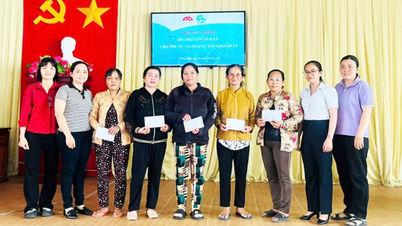

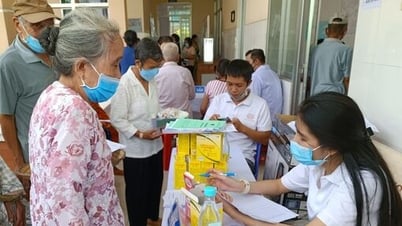

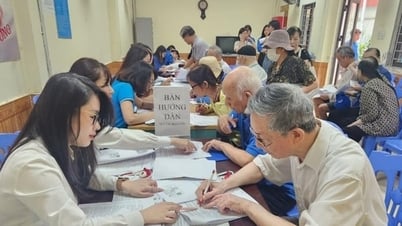








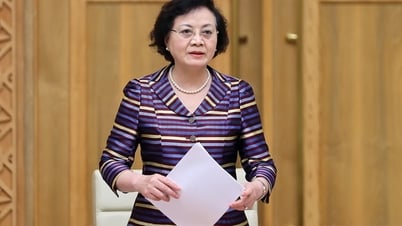









































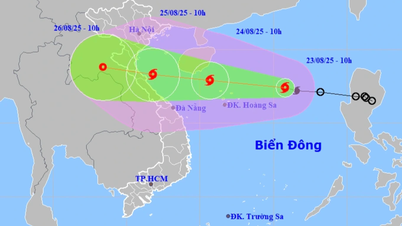










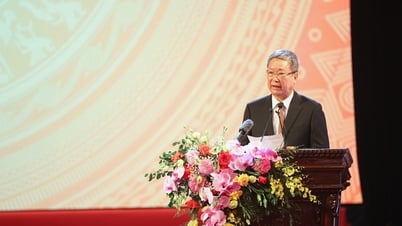


























Comment (0)